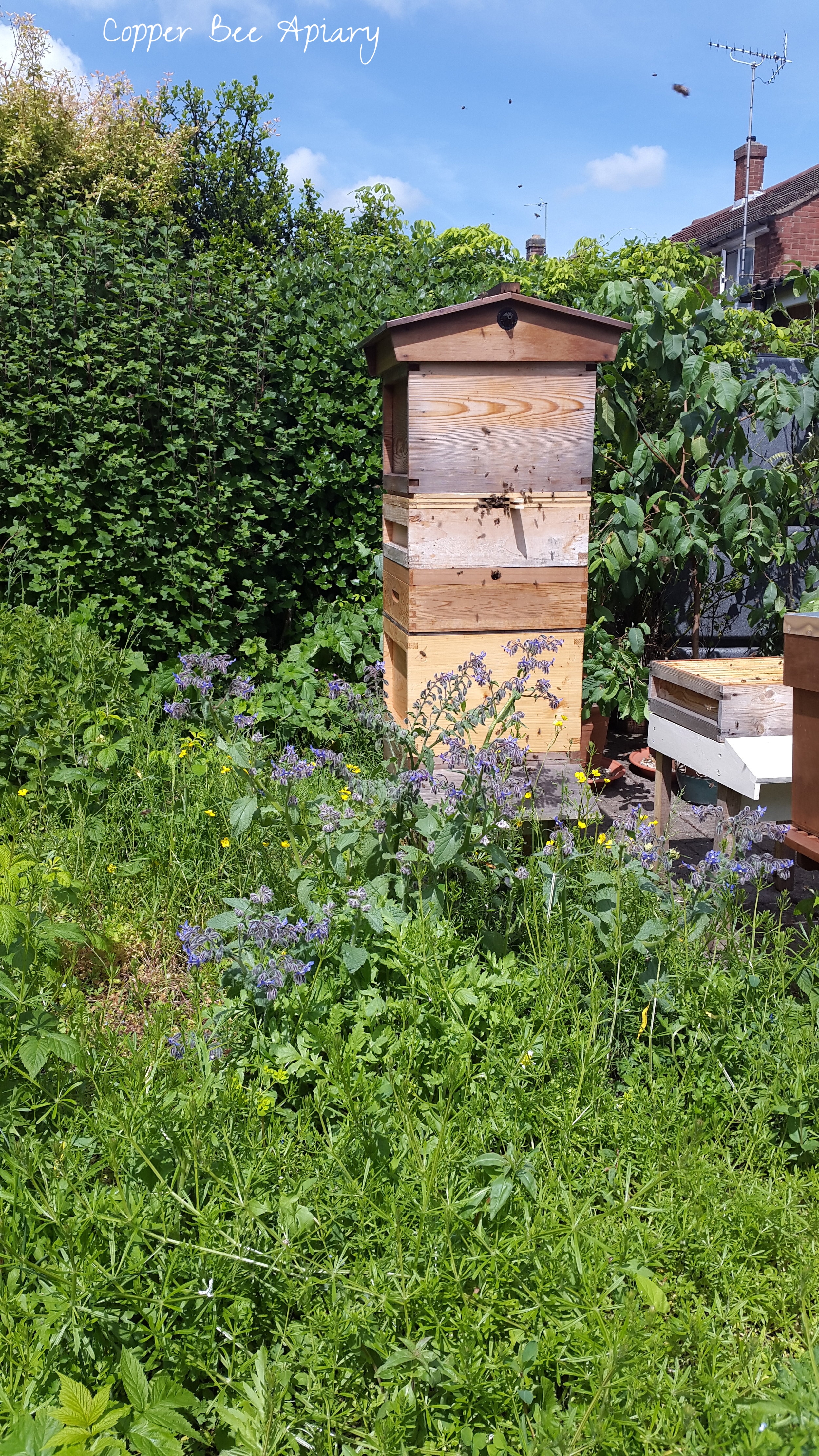Four Happy Hives
Today's statistics:
- Beehives opened: 4
- Brood frames inspected: 44
- Gloves worn: 0
- Stings received: 0
- Surprises: 2
I've been in the habit of wearing those disposable thin latex gloves when I'm working in the beehives. They are easy to change between hives and they keep the propolis off your fingers. But the box ran out the other day without my having noticed we were getting low, so I'm gloveless now. It went fine today inspecting the hives without gloves. When you get bees all over your hands it does tickle! But it's also a little easier to feel when there's a bee in the way when picking something up or putting it down, so it could be an improvement.
Cedar Hive
These bees are a lovely colony. They smell like a summer meadow. And they do not seem inclined to swarm, so they are the sole single-storey hive left in the apiary.
In this hive came my first surprise - a pollen forager carrying blue pollen. Blue. A light, greeny blue. That's not a shade I could find on my pollen chart. Maybe I should've got the full pollen reference book instead of the handy little flip card version, like they tried to persuade me to at the book stall.
Disc Hive
A new queen should be emerging very soon in the bottom box of the Disc Hive. Meanwhile, all seems well in the top box. I think I did indeed get there in the nick of time when I split them last weekend, causing them to cancel their swarming plans at the last minute.
Copper Hive
This hive is so tall that I had to stand on a chair to access the top brood box! There are sealed queen cells, from which new queens should be ready to emerge next weekend. Meanwhile I hope Queen Dawn is building up a new brood nest in the bottom box. There's no easy way to have a look, but there's no particular reason to either, so I shall leave her to get on with it.
Pond Hive
The Pond Hive contained the second surprise. You remember that I thought this colony must have swarmed on Easter Sunday, because on Easter Monday I found it packed with sealed queen cells. Well, there hasn't been enough time for the hive to have a new laying queen already, and yet there were eggs and young larvae in the top brood box. The explanation? Queen Felicity! It seems she hadn't yet swarmed after all. She must have been on the point of departure when I split them, just like the Disc Hive.
So I think I can add to my statistics:
- Swarms issued so far this year: 0
Thank you, my wonderful, agreeable bees!









